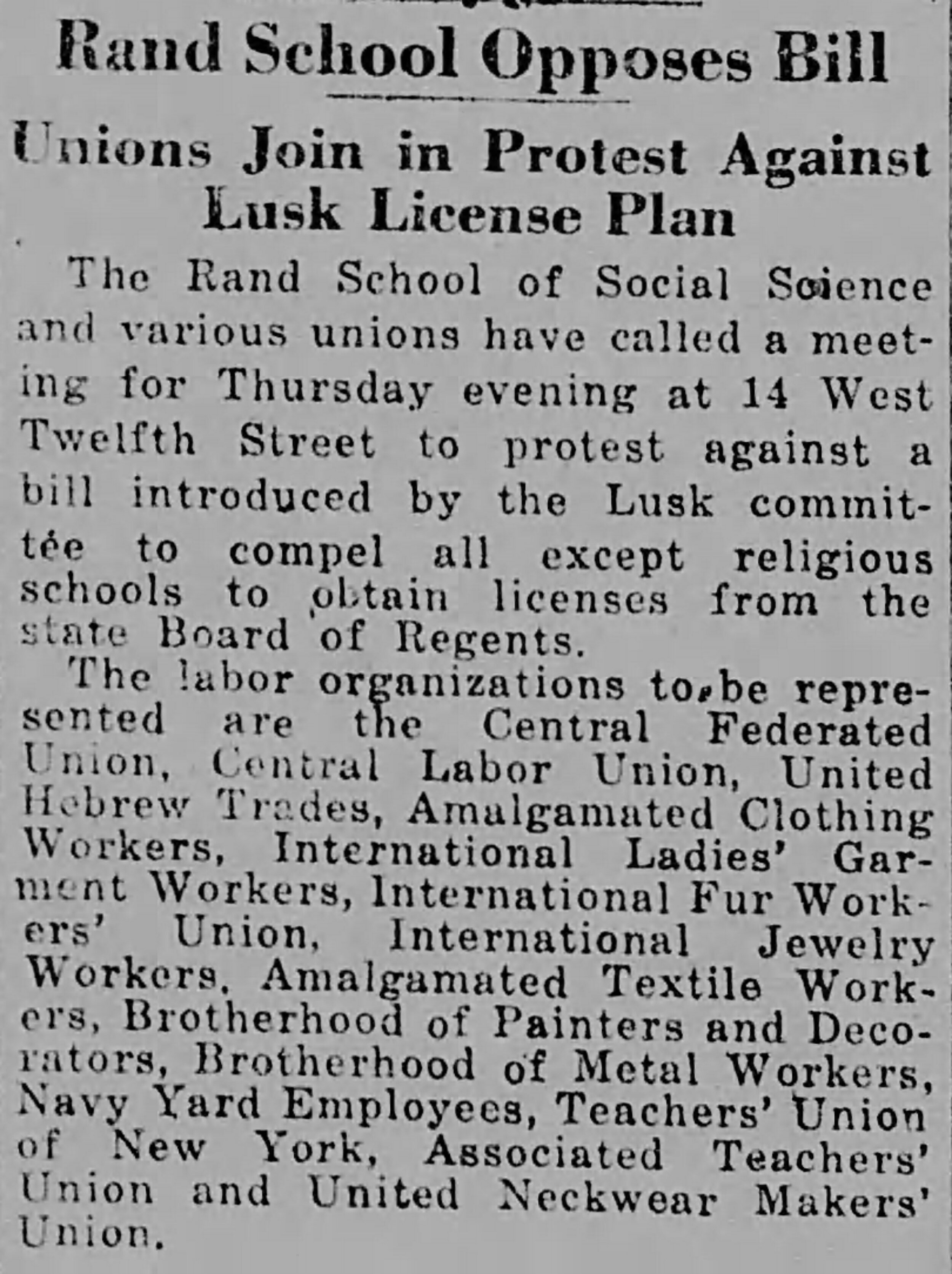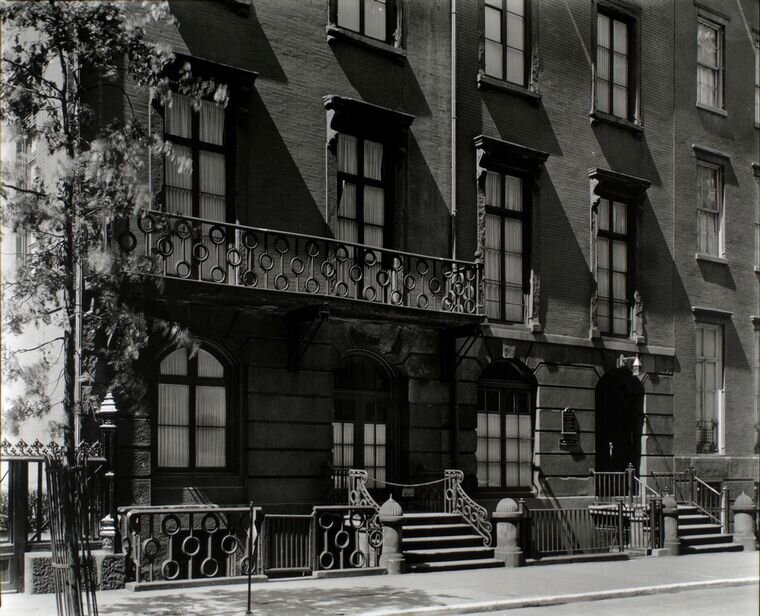The Rand School
One hundred years ago today … the officials of the Rand School of Social Science, under attack from conservative forces–primarily the Lusk Committee–held an emergency meeting along with its union allies.
The Tribune, reliably sympathetic to progressive causes, announced the meeting, its participants and its rationale.
New York Tribune, 22 Mar. 1920, p. 8. Newspapers.com.
But the meeting had another purpose: fighting for the school’s survival. Closing the Rand school was one of the proposals of the Lusk Report to the New York State Assembly, as we recount in our March 18th post linked here about the Lusk Committee.
The Lusk Committee had fingered the Rand School as a threat to US capitalism as early as June of 1919, when it provided supposed intel to US Attorney General A. Mitchell Palmer, who had the school raided–a first strike of the Palmer Raids (See our January 3rd post linked here.) Palmer’s Bureau of Investigation continued to team up with the Lusk Committee to harass the Rand School and people associated with it. Among their many accomplishments was the December 31st, 1919 arrest of a Ms. Julia Pratt, drawing teacher for the Buffalo, New York, school system, for her contact with the Rand School in 1916 (“School Teacher Accused,” New York Times 1 Jan. 1920, p. 17).
The Rand School was founded in 1906 with, as Mike Wallace writes, a goal of “tutoring actual or would-be Socialist Party and labor union organizers, as well as journalists and civil servants, in socialist theory and applied social science . . . [and to] offer adult education courses in US history, science, philosophy, drama and the arts, and English grammar, plus classes in public speaking” (Wallace, 688).
The Rand School also served as a publishing house for its researchers. It put out, for example, The American Labor Year Book, 1919-1920, edited by Alexander Trachtenberg, in February 1920.
University of Connecticut Library. The Internet Archive.
By 1920, the Rand School was housed at 7 East 15th Street, in a building (featured in our January 8th post linked here), popularly known as “The People’s House,” and owned by the Intercollegiate Socialist Society (Wallace). The School held its March 25th meeting, though, at 14 West 12th Street, the Church House of the First Presbyterian Church. The townhouse is best known for its wrought-iron facade and the photograph taken of it in 1936 by Berenice Abbott, the photographer-laureate of New York City.
Berenice Abbott, Facade, 14 West 12th Street, Manhattan. Federal Art Project, Sponsor, 1936. New York Public Library. The Miriam and Ira D. Wallach Division of Art, Prints and Photographs: Photography Collection.



